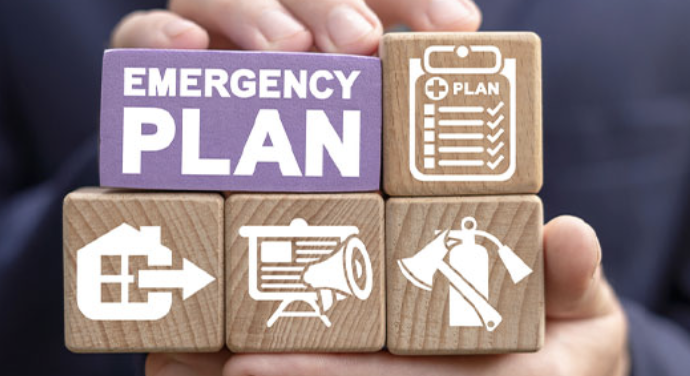Emergency Preparedness for Property Owners and Property Managers

Creating an Emergency Plan to Protect Tenants and Properties
As a property owner or manager, ensuring the safety and security of your tenants and properties in the face of natural disasters or other emergencies is paramount. Having a well-thought-out emergency plan can make a significant difference in mitigating risks and managing crises effectively. Here’s a comprehensive guide to creating an emergency preparedness plan for property Owners and Property Managers tailored to the needs of property owners and property managers.
Assessing Potential Risks
The first step in emergency preparedness is to identify the types of emergencies most likely to occur in your area. Common emergencies include:
- Natural Disasters: Earthquakes, floods, hurricanes, tornadoes, wildfires, etc.
- Man-made Incidents: Fires, gas leaks, power outages, vandalism, etc.
- Health Emergencies: Pandemics, severe weather causing health hazards, etc.
Understanding these risks will help you tailor your emergency plan to address the specific challenges they present.
Developing an Emergency Plan
- Establish a Response Team
Create a dedicated emergency response team consisting of key staff members, such as property managers, maintenance personnel, and security staff. Assign roles and responsibilities to ensure a coordinated and efficient response.
- Create an Evacuation Plan
- Designate Evacuation Routes: Clearly mark and communicate evacuation routes and exits for all buildings.
- Identify Safe Zones: Determine safe areas both within and outside the property where tenants can gather during an emergency.
- Conduct Drills: Regularly conduct evacuation drills to ensure tenants and staff are familiar with the procedures.
- Communication Plan
- Emergency Contacts: Maintain an up-to-date list of emergency contacts, including local emergency services, utility companies, and key staff members.
- Tenant Notification: Establish a system for quickly notifying tenants of emergencies, such as text alerts, emails, or intercom announcements.
- Crisis Communication: Develop a communication plan for disseminating information to tenants, staff, and the media during and after an emergency.
- Supply and Equipment Stockpile
- Emergency Kits: Provide emergency kits in common areas and offices, containing items such as first aid supplies, flashlights, batteries/ chargers, and non-perishable food.
- Backup Power: Ensure backup power sources, such as generators, are available and in working condition.
- Maintenance Supplies: Stock essential maintenance supplies, like tools, tarps, and repair materials, to quickly address property damage.
- Build an emergency kit. For more information on kits click here
- Insurance and Documentation
- Review Insurance Policies: Ensure your insurance coverage is adequate for the types of emergencies you may face. For more detailed information on homeowner’s insurance, check out our interview with Timothy Powlison, an agent of Farmers Insurance, discussing the essentials of homeowner’s insurance.
- Document Assets: Keep an updated inventory of property assets, including photos and descriptions, to facilitate insurance claims and repairs.
- Emergency Funds: Set aside emergency funds for unexpected expenses related to emergency situations.
Training and Education
- Staff Training: Regularly train your staff on emergency procedures, first aid, and crisis management.
- Tenant Education: Provide tenants with information and resources on emergency preparedness, including evacuation routes, emergency contacts, and safety tips.
- Community Resources: Partner with local emergency services and organizations to offer workshops and resources to tenants and staff.
Post-Emergency Actions
- Damage Assessment: Conduct thorough inspections of the property to identify and address any damage or safety hazards.
- Tenant Support: Offer support to tenants affected by the emergency, including temporary housing options if needed.
- Debrief and Improve: After an emergency, review the effectiveness of your response and make necessary improvements to your emergency plan.
By taking proactive steps to create and maintain an emergency preparedness plan, property owners and managers can significantly enhance the safety and security of their tenants and properties. At Asurent Property Management, we are committed to helping you develop and implement effective emergency plans, ensuring peace of mind in the face of any crisis.
Stay prepared, stay safe, and protect your community with a robust emergency plan.
If you need assistance in developing or updating your emergency preparedness plan, contact Asurent Property Management today. Our team of experts is here to support you every step of the way.
